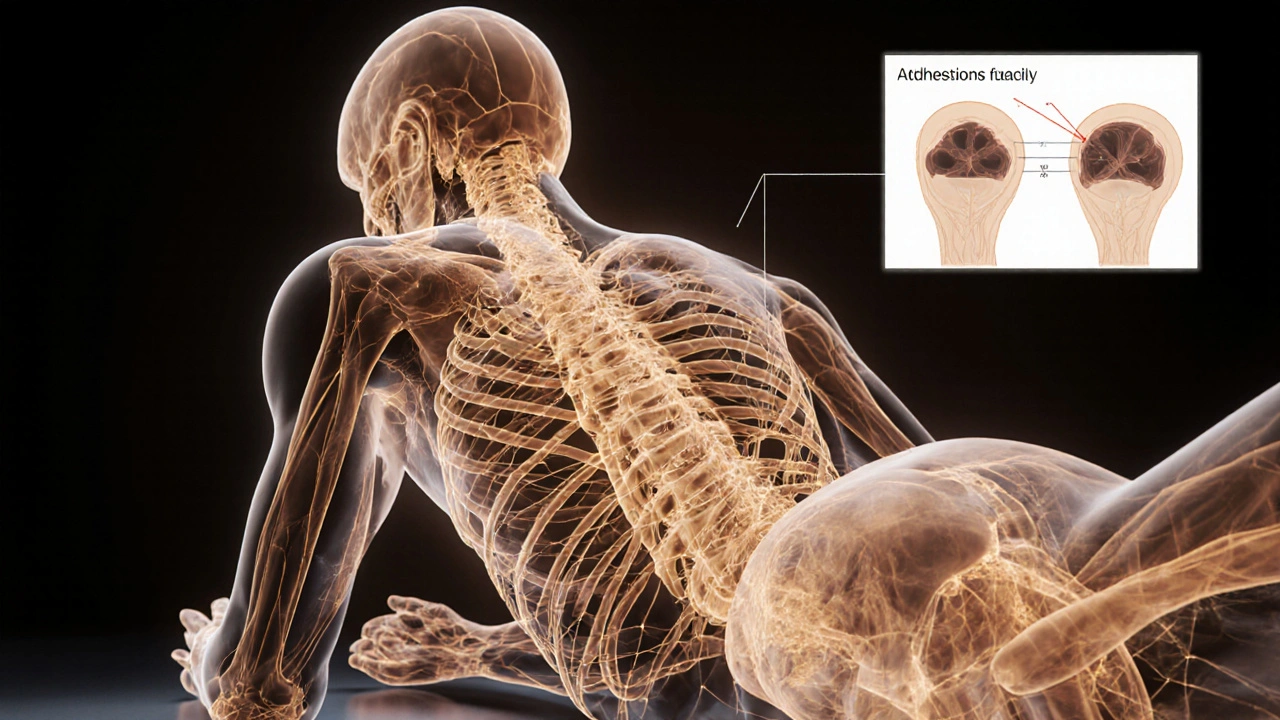Fascia: Understanding the Body’s Connective Network
When working with fascia, the thin but strong sheet of connective tissue that wraps muscles, bones, and organs. Also known as connective tissue, it holds the body together and lets you move fluidly. In plain terms, fascia is the body's internal scaffolding; it transmits force, stores tension, and responds to pressure. Because it links every part of you, even a small change in one area can ripple across the whole system.
One of the most common ways to work with fascia is myofascial release, a hands‑on technique that applies sustained pressure to stretch and soften the tissue. This method requires patience and focused pressure, but the payoff is real: increased range of motion, reduced soreness, and a feeling of lightness. Myofascial release actually targets the layers of fascia that have tightened from stress or inactivity, helping the body regain its natural glide.
Closely related is trigger point therapy, the practice of locating and deactivating tight knots within muscles and their surrounding fascia. A trigger point is like a tiny storm inside a muscle; when you press on it, the storm calms and pain eases. This therapy influences muscle tension by releasing the fascia that binds the knot, which can improve posture and lower chronic aches.
Another powerful approach is Thai bodywork, a blend of assisted stretching, pressure points, and rhythmic movements that works deep into the fascial network. Thai massage often feels like a moving yoga session; the practitioner uses their hands, elbows, and feet to stretch you while applying pressure along fascial lines. Because it engages both the fascia and the vagus nerve, it can boost relaxation and even support better sleep.
For those who prefer a high‑tech option, percussion massage, a handheld device that delivers rapid, rhythmic taps to stimulate muscle and fascia, offers a fast way to loosen tight spots. The rapid taps create micro‑vibrations that increase blood flow, break up adhesions, and reset nervous system activity. Users often report quicker recovery after workouts and a noticeable drop in overall tension.
All these practices—myofascial release, trigger point therapy, Thai bodywork, and percussion massage—share one goal: to keep fascia healthy and functional. When fascia works right, every movement feels smoother, pain levels drop, and you can enjoy other massage styles like erotic or sensual sessions without discomfort. Our collection below pulls together articles that explore each technique in depth, from practical step‑by‑step guides to the science behind why they matter.
Ready to explore? Below you’ll find a curated mix of posts that break down each method, show you how to apply them safely, and explain the real benefits you can expect. Dive in and discover how mastering fascia can upgrade every touch experience you seek.
Myofascial Release Therapy: Benefits, Techniques & How It Works
Discover how myofascial release therapy works, its key benefits, techniques, and who can benefit. Learn to choose a practitioner and simple at‑home tips for lasting relief.






